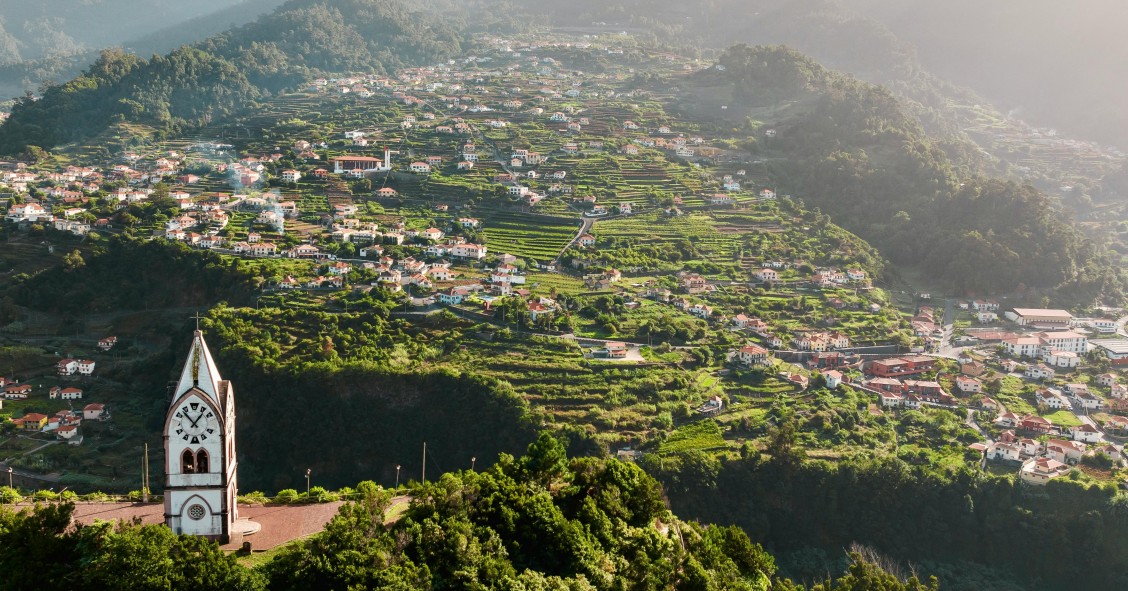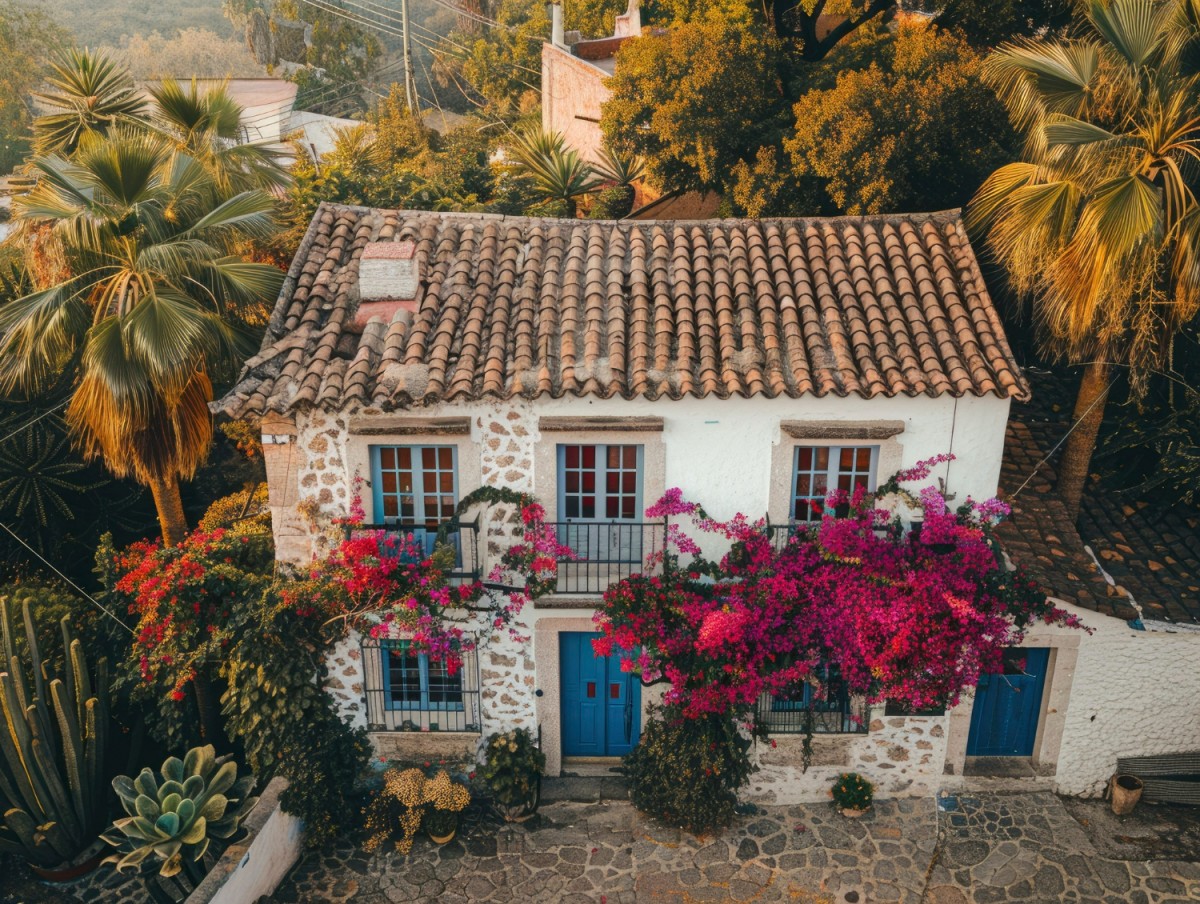
Portugal boasts a rich architectural heritage. Throughout the country, from north to south, you can find a diverse array of dwellings, including traditional houses that feature delightful characteristics. Rural tourism unveils a plethora of stunning structures, with homes renowned for their exceptional beauty. Explore the enchanting charms of traditional Portuguese houses and architecture.
Traditional Portuguese houses
What is the architecture of Portuguese houses? Traditional Portuguese houses can be quite distinct. There are both large and small dwellings, and we can find more opulent constructions as well as more modest ones.
Travelling the country from coast to coast allows us to discover iconic houses built with a variety of materials, whether granite, schist, rammed earth, or basalt. Their beauty captivates us. Portugal's cultural richness is reflected in the diversity of materials, sizes, and architectural styles used.
Today, the value of traditional constructions is widely recognised. Many rural homes are being rehabilitated. Even windmills and barns are rightly appreciated, even if they are adapted for functions different from their original ones.
Although many buildings vary in shape, they all find ways to enchant us, often through the stories they have to tell. Discover the homes of Portugal that possess a unique charm. They are undoubtedly truly Portuguese houses.
Island Houses in Portugal
Island architecture features examples of dwellings that possess a unique aesthetic. In the archipelagos of the Azores and Madeira, we can find various examples of architecture adapted to the distinct terrain and climate of these islands.
Basalt Houses (Azores)
These buildings were constructed with the local volcanic stone. Basalt houses have an original beauty, characterised by a robust appearance.
In addition to these very resilient and long-lasting homes, there are other constructions on the island, also made of basalt, including windmills and walls. These unique structures, built from this material, serve as a distinctive identity mark of the region.
Santana Houses (Madeira)
These triangular houses are iconic: the calling card of the island. The distinctive constructions stand out for being made of wood and featuring thatched roofs.
These charming houses excel in their singular beauty. The Santana houses utilise the materials available in the region. The thatched roofing used in the dwellings maximises cereal cultivation and the slope of the roofs ensures waterproofing, effectively promoting the drainage of rainwater.
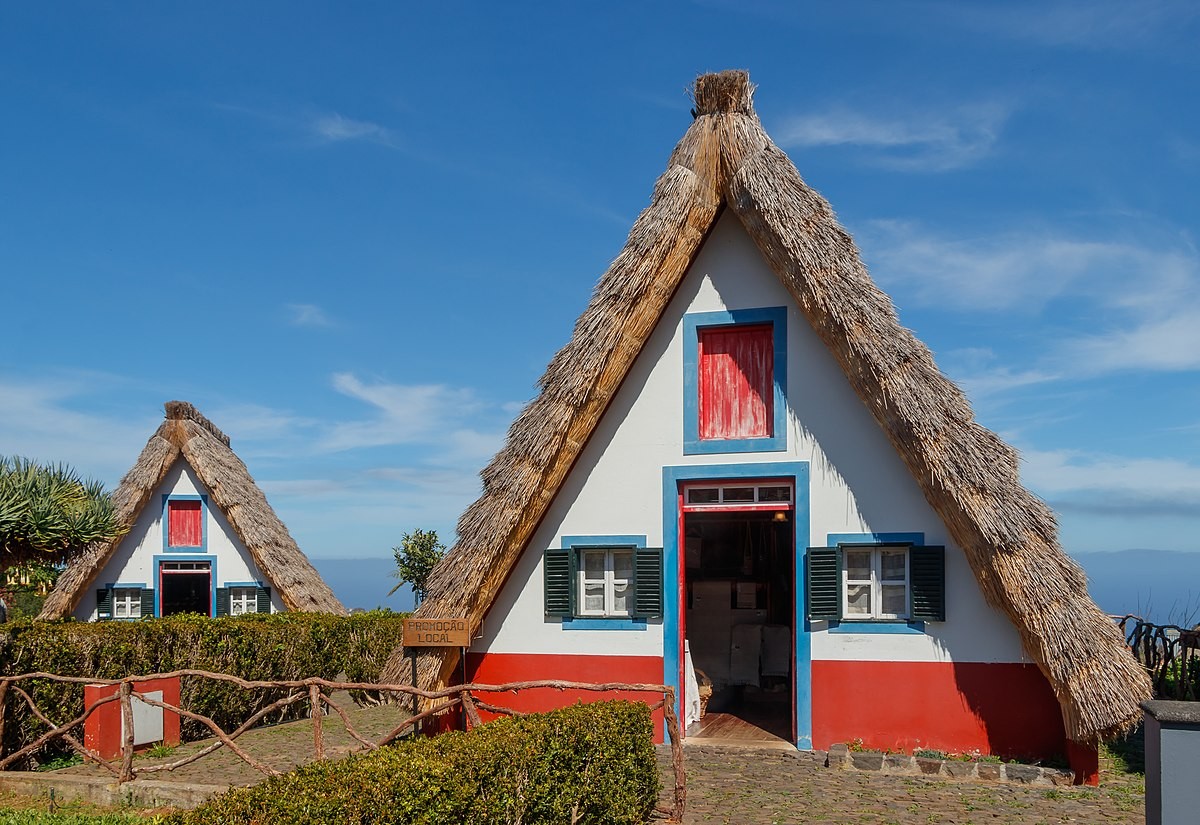
Houses of the North of Portugal
In the North, we can also find typical Portuguese houses that reveal a unique beauty. The stone houses possess a charm that contributes to the rise of rural tourism in northern Portugal.
Village of Pontes (Castro Laboreiro)
The northern climate is colder and wetter. As a result, traditional constructions have adapted to this harsher reality with sturdier local architecture.
In northern Portugal, it is common to see stone houses made of granite or schist. The thick-walled buildings are diverse in the region. These homes ensure waterproofing against rain and provide thermal insulation, thus protecting their inhabitants.
Casa Minhota
The Casa Minhota is a typical construction from the Minho region. This dwelling is characterised by wooden balconies, which were used for drying. Generally, the Casa Minhota features ornamental details on the windows and doors. Traditionally, the ground floor of the house was reserved for animals and agricultural products, while the upper floor was intended for people.
Casa Serrana
The Casa Serrana is simpler than the Casa Minhota. Its presence is common in mountainous areas (Minho, Trás-os-Montes, and Beiras Alta and Baixa), hence its name. This dwelling also makes abundant use of stone, particularly granite.
Typically, the house emerges from the natural rock of the soil, designed to blend with the natural slopes of the land.
This construction is imposing, being robust and solid. Often, there is an internal courtyard in the Casa Serrana, along with adjacent barns. Generally, the Casa Serrana consists mainly of the house and the pen. When corn is grown, there are also granaries and threshing floors.
Carenhas do Alto Minho
These small granite constructions were originally used as temporary shelters by shepherds. The Carenhas do Alto Minho feature a simple and functional design. These buildings are perfectly integrated into the rural landscape. Nowadays, they have been adapted for tourist accommodation.
Houses in Central Portugal
The architecture in the centre of the country showcases various examples that reflect a blend of influences and trends.
Wooden Houses
The Wooden House architectural style is commonly found in the Coastal Centre. This type of construction is characteristic of coastal areas. The barns were built to serve specific functions. They functioned as storage for fishing equipment and later served as temporary shelters. These buildings have since become homes for families during the holiday season and have even served as temporary accommodation. An example of these constructions is the famous colourful barns of Costa Nova.
Schist Houses
There are 27 Schist Villages in Portugal. They are spread across a territory of 5,000 km², divided among 20 municipalities. These constructions are quite common in the villages of the Lousã and Açor mountains, as well as along the Zêzere and Tejo-Ocreza rivers. They are called schist villages because this is the stone used in the construction of houses and is abundant in the region.
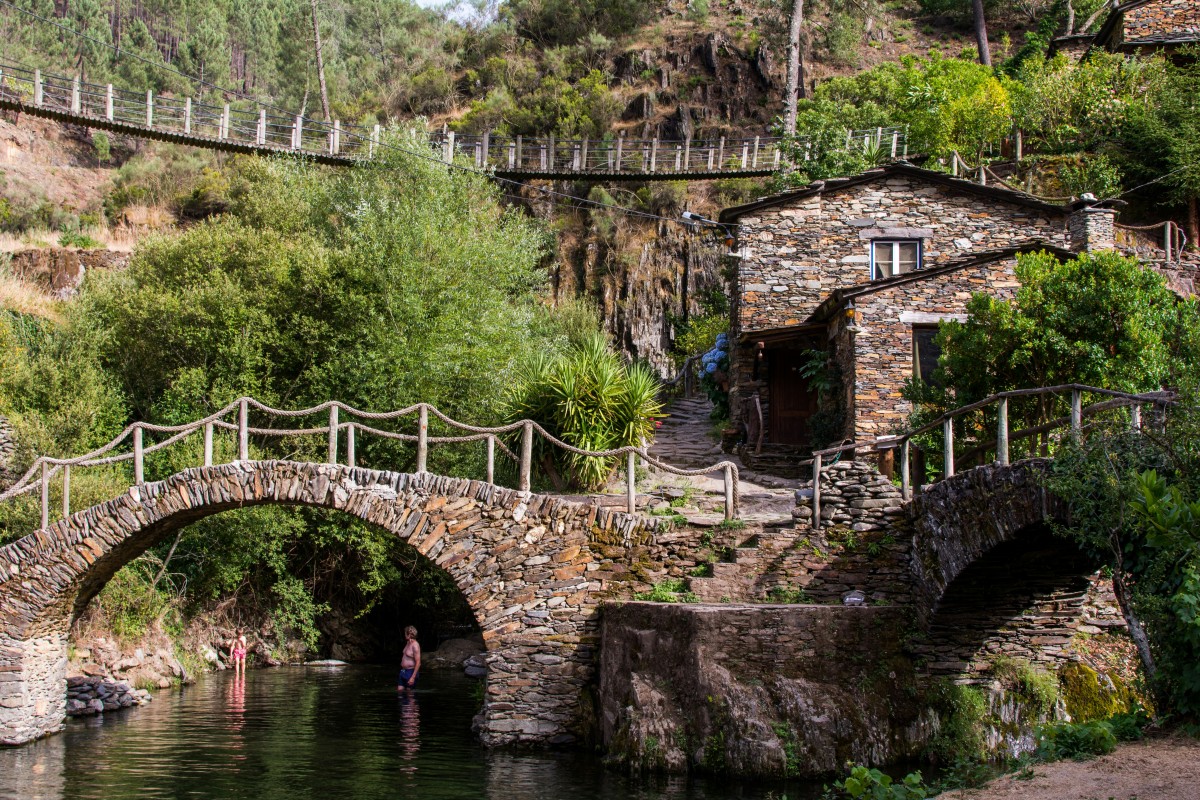
Schist Houses are characterised by their robust appearance. These picturesque constructions have been revitalised in recent years. However, they maintain their unique beauty that attracts many people (both locals and foreigners) to rural tourism.
Casa Saloia
Generally, this is a construction made of rammed earth or limestone. The Casa Saloia exudes genuine charm and a special uniqueness. This building is characterised by a single-storey section and another with two floors, which are adjacent to each other, featuring stone arches, a porch, and a walled yard. Often, there are decorations with animal motifs, particularly swallows.
Houses in the Alentejo Region
The architecture in the Alentejo region is defined by its simplicity and functionality.
In Alentejo, the houses are whitewashed, which enhances the rural landscape. These dwellings feature colourful bars on the doors and windows to protect against the intense summer heat.
The whitewashed houses are constructed from rammed earth (a material made from a mixture of soil and straw) or brick, solutions that provide excellent thermal insulation against temperature fluctuations.
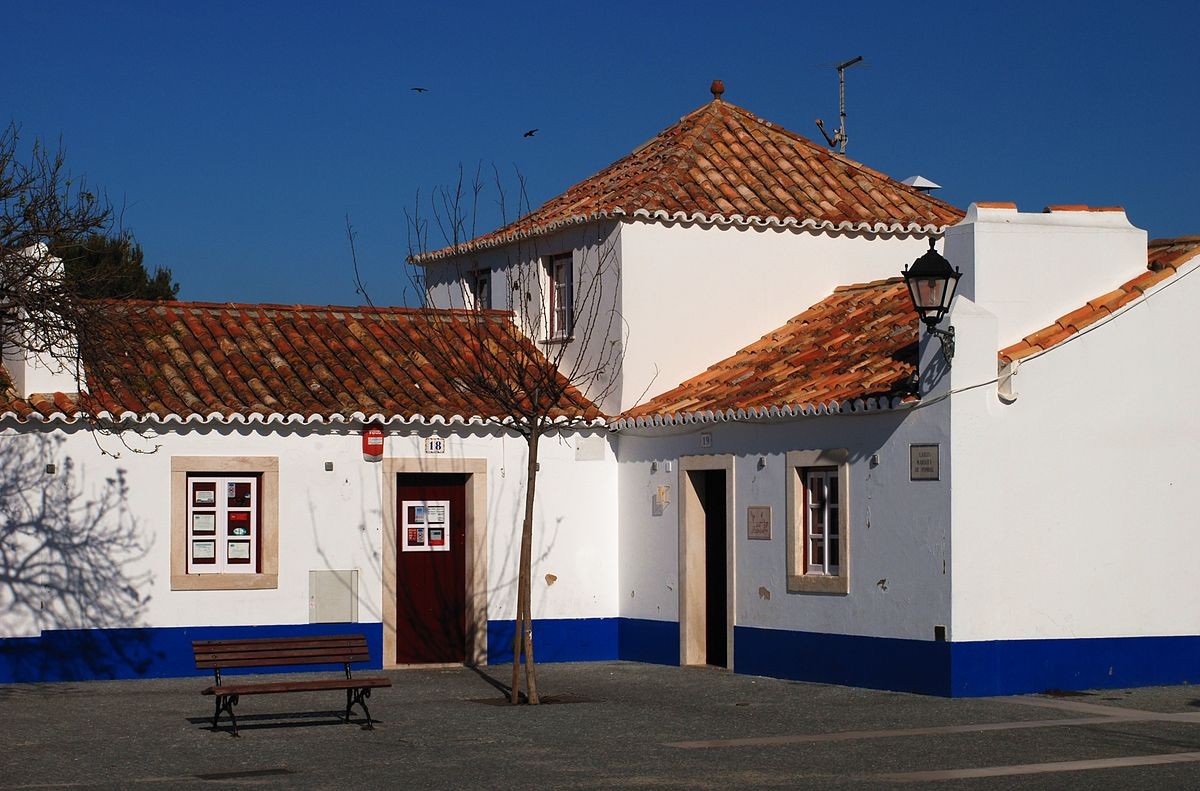
Montes Alentejanos
These single-storey houses are set within large properties. They consist of rectangular-shaped constructions. These whitewashed houses have a gabled roof with multiple chimneys. They combine living space with other dependencies related to rural work.
Settlement Houses
These buildings are typical of the population clusters in Alentejo villages and are arranged continuously along the street, revealing several rows of houses. Traditionally, these constructions are inhabited by rural workers. The Houses of the Settlement are exclusively residential and not used for farming. Therefore, these buildings do not have any space for storing agricultural tools or animals.
Algarve Houses
A traditional Algarve House is characterised by its Moorish elements, notably the rooftops, terraces on the tops of the houses, and ornate chimneys. Generally, these constructions are dwellings of one or two storeys. Algarve properties also typically feature white walls and displays details in blue or yellow.




